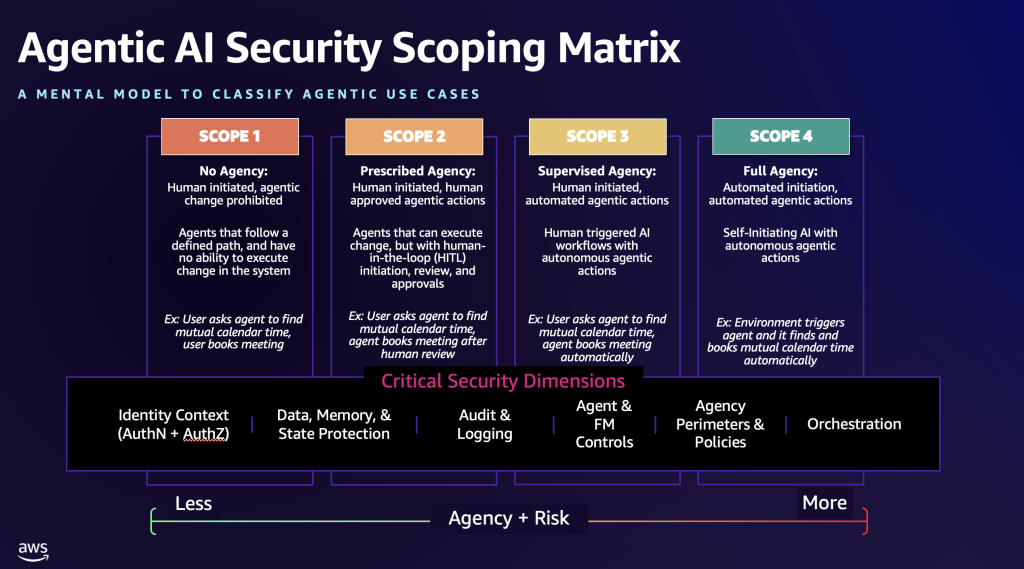AWS Security Blog
Category: Intermediate (200)
AWS Private Certificate Authority now supports partitioned CRLs
Public Key Infrastructure (PKI) is essential for securing and establishing trust in digital communications. As you scale your digital operations, you’ll issue and revoke certificates. Revoking certificates is useful especially when employees leave, migrate to a new certificate authority hierarchy, meet compliance, and respond to security incidents. Use the Certificate Revocation List (CRL) or Online […]
AWS Secrets Manager launches Managed External Secrets for Third-Party Credentials
Although AWS Secrets Manager excels at managing the lifecycle of Amazon Web Services (AWS) secrets, managing credentials from third-party software providers presents unique challenges for organizations as they scale usage of their cloud applications. Organizations using multiple third-party services frequently develop different security approaches for each provider’s credentials because there hasn’t been a standardized way […]
Practical steps to minimize key exposure using AWS Security Services
Exposed long-term credentials continue to be the top entry point used by threat actors in security incidents observed by the AWS Customer Incident Response Team (CIRT). The exposure and subsequent use of long-term credentials or access keys by threat actors poses security risks in cloud environments. Additionally, poor key rotation practices, sharing of access keys […]
Accelerate investigations with AWS Security Incident Response AI-powered capabilities
If you’ve ever spent hours manually digging through AWS CloudTrail logs, checking AWS Identity and Access Management (IAM) permissions, and piecing together the timeline of a security event, you understand the time investment required for incident investigation. Today, we’re excited to announce the addition of AI-powered investigation capabilities to AWS Security Incident Response that automate […]
The Agentic AI Security Scoping Matrix: A framework for securing autonomous AI systems
As generative AI became mainstream, Amazon Web Services (AWS) launched the Generative AI Security Scoping Matrix to help organizations understand and address the unique security challenges of foundation model (FM)-based applications. This framework has been adopted not only by AWS customers across the globe, but also widely referenced by organizations such as OWASP, CoSAI, and […]
Introducing the Landing Zone Accelerator on AWS Universal Configuration and LZA Compliance Workbook
We’re pleased to announce the availability of the latest sample security baseline from Landing Zone Accelerator on AWS (LZA)—the Universal Configuration. Developed from years of field experience with highly regulated customers including governments across the world, and in consultation with AWS Partners and industry experts, the Universal Configuration was built to help you implement security […]
How to automate Session Manager preferences across your organization
AWS Systems Manager Session Manager is a fully managed service that provides secure, interactive, one-click access to your Amazon Elastic Compute Cloud (Amazon EC2) instances, edge devices, and virtual machines (VMs) through a browser-based shell or AWS Command Line Interface (AWS CLI), without requiring open inbound ports, bastion hosts, or SSH keys. Session Manager helps […]
2025 H1 IRAP report is now available on AWS Artifact for Australian customers
Amazon Web Services (AWS) is excited to announce that the latest version of Information Security Registered Assessors Program (IRAP) report (2025 H1) is now available through AWS Artifact. An independent Australian Signals Directorate (ASD) certified IRAP assessor completed the IRAP assessment of AWS in September 2025. The new IRAP report includes four additional AWS services that are now assessed at […]
Securing AI agents with Amazon Bedrock AgentCore Identity
By using Amazon Bedrock AgentCore, developers can build agentic workloads using a comprehensive set of enterprise-grade services that help quickly and securely deploy and operate AI agents at scale using any framework and model, hosted on Amazon Bedrock or elsewhere. AgentCore services are modular and composable, allowing them to be used together or independently. To […]
Should I use managed login or create a custom UI in Amazon Cognito?
October 8, 2025: This blog post has been updated to include the Amazon Cognito managed login experience. The managed login experience has an updated look, additional features, and enhanced customization options. September 8, 2023: It’s important to know that if you activate user sign-up in your user pool, anyone on the internet can sign up […]









